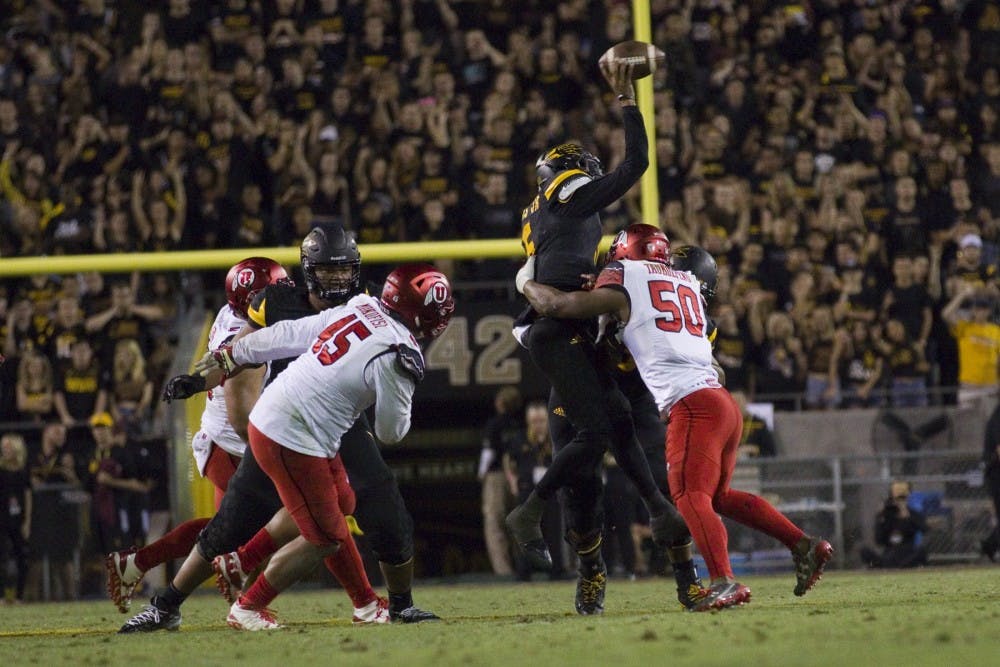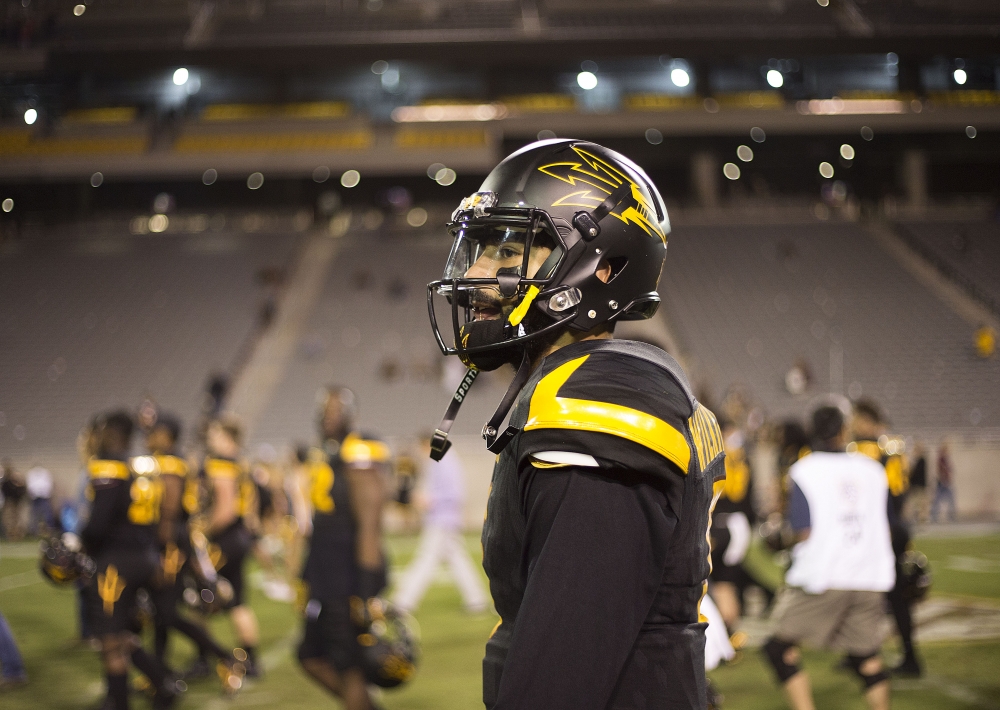The word "decimate" has its roots in the Latin decimare, which means to “take or offer a tenth part.”
ASU football had 10 injured starters who were either ruled out or questionable for Thursday night’s game against No. 15 Utah – and three of them were on the offensive line.
The Sun Devils (5-5, 2-5 Pac-12) dropped their fourth straight game of the season, 49-26 to the Utes (8-2, 5-2 Pac-12) in what was largely due to the injuries suffered by key players up front. While junior center AJ McCollum did play, redshirt sophomore left guard Sam Jones and redshirt senior right guard Stephon McCray did not, due to a foot injury and an ailment that was undisclosed, respectively.
Late in the fourth quarter, redshirt junior center Tyler McClure left the field and returned to the locker room, before returning once more to the field. His status is unknown.
This instability has wreaked havoc on the unit, which has also cycled through quarterbacks – redshirt sophomore Manny Wilkins started and finished his first full game (except for ASU’s final possession when freshman Dillon Sterling-Cole was called upon for mop-up duty) since the Sun Devils beat Cal 51-41 on Sept. 24.
The gaps in the offensive line were on full display Thursday night, as they were in a 54-35 loss at Oregon – Wilkins was sacked nine times and Sterling-Cole was sacked twice, as the Utes set a school record with 22 tackles for loss.
Leading the charge for Utah was senior defensive end Hunter Dimick, who recorded nine tackles – five of which were sacks.
“We got sacked 11 times, which is ridiculous,” head coach Todd Graham said. “Our whole deal was to have no negatives and to take care of the football but we ended up with 11 sacks and 22 TFLs. It is hard to be successful when you’re doing that.”
Wilkins expressed frustration and disappointment in himself for taking big hits – though his mobility and knack for avoiding imminent danger on several occasions was a key reason why the Utah defense didn’t rack up even more impressive numbers.
Perhaps it was because he hadn’t established a rhythm, or perhaps it was that he was, like some critics said, taking too long to get the ball out.
“I’m not trying to take away from Utah,” Wilkins said. “Like I said before, they did a great job game planning for us. But those are just mental errors on my part. (The interceptions) are two errors I can’t do. Obviously there was a climb route down there in the end zone, and I just didn’t see a guy coming back across.
“Just have to know that we have points there regardless, we have the best field goal kicker in the nation. I just have to throw that away or get what I can get and get down. At the end of the game, just a simple concept. He made a good play, but I shouldn’t have thrown that ball.”
The lack of protection in the absence of Jones and McCray left Wilkins vulnerable from both sides – Dimick, who set a single-game school record, and senior defensive end Pita Taumoepenu, who recorded three sacks of his own, were relentless in their pass rush.
“I just need to get the ball out of my hands,” Wilkins said. “Obviously not take some of those hits. Just going through my reads and hitting the back when things aren’t there. I take full accountability for that, just have to make sure I get better and not make those same mistakes next week.”
It is difficult to overstate how fundamentally important an offensive line is to a team’s success. When junior running back Kalen Ballage set an FBS-single game record with eight rushing touchdowns against Texas Tech on Sept. 10, he brought the entire line with him to his postgame press conference to acknowledge their efforts.
No such luck tonight.
While Graham said ASU’s decision to decrease pressure with his defense had resulted in a decline in production, the opposite was true for Utah. The Utes’ risk-taking paid off by forcing Wilkins to make tough decisions in very finite windows of time and space.
“A lot of coverage sacks, quarterback dropbacks and having to double clutch and pull the ball down because there’s nowhere to go with it,” said Utah head coach Kyle Whittingham. “The pass rush did a nice job showing up.”
The similarities between the rhetoric Dimick used and how Graham and his players have approached their “attacking-style defense” were eerie.
“There was nothing we went after or noticed in particular,” Dimick said of ASU’s offensive protection scheme. “We take a lot of pride in pressuring the quarterback and that is the game plan.”
Even with Wilkins presumably as close to full-strength as he had been since his injury at USC, the Sun Devils were unable to stave off the Utes in the trenches or overcome Utah’s top-flight pass defense, and were ultimately beaten at their own game.
Reach the reporter at smodrich@asu.edu or follow @StefanJModrich on Twitter.
Like State Press Sports on Facebook and follow @statepresssport on Twitter.





